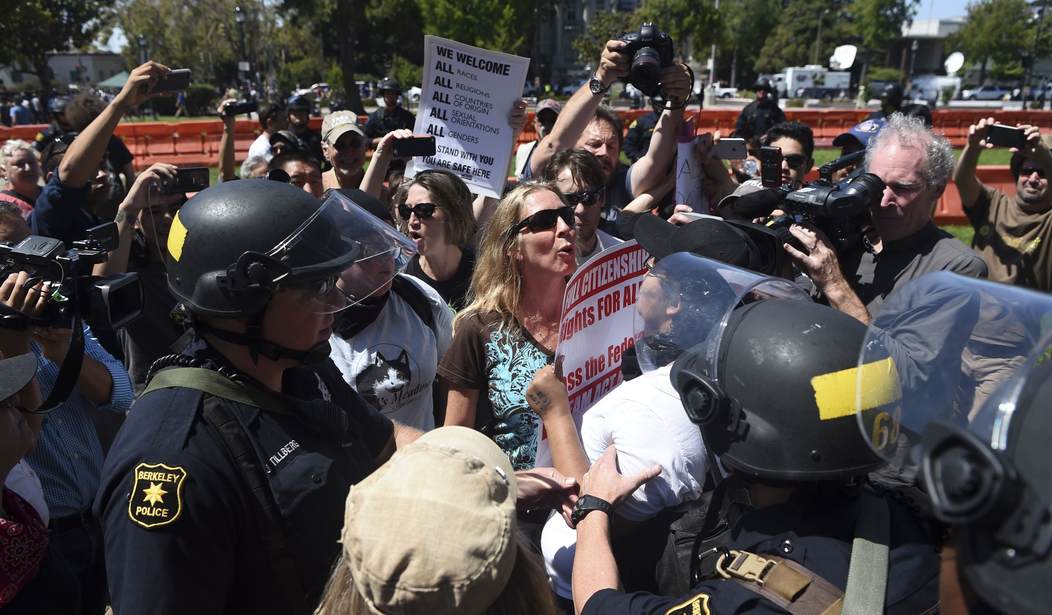How long did it take for Parag Agrawal to stomp all over hopes that the change in Twitter management might not make matters even worse? Less than 24 hours, as it turns out. The first major initiative by Twitter in the Agrawal era is not to make speech freer, but to give Twitter’s apparatchiks and activists even more power and less clarity on what will bring the ban hammer:
JUST IN – Twitter bans sharing images or videos of private individuals without their consent, just one day after former CTO Parag Agrawal was named CEO.
— Disclose.tv (@disclosetv) November 30, 2021
Twitter Safety makes it clear in a statement this morning that the aim isn’t just to protect “private individuals.” It’s to keep people from identifying “activists, dissidents” and others on the basis of pictures taken from actual public demonstrations:
There are growing concerns about the misuse of media and information that is not available elsewhere online as a tool to harass, intimidate, and reveal the identities of individuals. Sharing personal media, such as images or videos, can potentially violate a person’s privacy, and may lead to emotional or physical harm. The misuse of private media can affect everyone, but can have a disproportionate effect on women, activists, dissidents, and members of minority communities. When we receive a report that a Tweet contains unauthorized private media, we will now take action in line with our range of enforcement options.
Is this a response to the doxxing of JK Rowling, or the counter-complaint by Rowling’s doxxers of having been fed the same sauce as the gander? Those issues are already covered in Twitter Safety’s rules, as their statement makes clear. The only addition to the standard for bans is this:
NEW: media of private individuals without the permission of the person(s) depicted.
In what context does this ban apply, however? If we’re talking about someone’s high-school senior portrait, well, okay. However, if the pictures come from a public protest, then it’s not a privacy issue at all. People have the right to take pictures in the public square and do not have to get consent to either take those pictures or publish them — unless they expect to profit commercially from an individual’s image, which is a grayer area. Making one’s self into a public figure by conducting public protests means forgoing the privacy concerns, at least as far as the law goes.
So which of these can provoke a ban — private images from non-public events, or images from public demonstrations? Twitter Safety doesn’t say, but their statement suuuure insinuates that it’s the latter as well as the former.
My friend Lyndsey Fifield wonders how this will get applied, for instance:
If I film someone breaking into my car and tweet it, am I breaking the rules?
If someone films and tweets video of a riot and the looters faces are visible, is he breaking the rules?
If someone livestreams a protest on Twitter are they breaking the rules?
WHAT ARE THE RULES.
— Lyndsey Fifield (@lyndseyfifield) November 30, 2021
At least for now, Twitter isn’t explaining this very clearly, and probably for good reason. That ambiguity is likely strategic, as it allows Twitter’s bureaucrats to arbitrarily apply this rule based on their own biases and beliefs. Consider that their explanation assures users that they will “always try to assess the context” of the picture to see whether it is posted “in the public interest,” or whether it will “add value to public discourse” or “relevant to the community.” Nothing arbitrary, capricious, or subjective about that, right? Right?
The point is clear enough. Twitter’s execs want the ability to tamp down on any accountability for public nuisances by penalizing the reporting of it rather than the nuisances themselves, when Twitter should be agnostic about it entirely. This new rule is clearly intended to impose their editorial content control across the platform, which technically should turn them into a publisher rather than a service provider. Not that that makes as much difference as is commonly thought, but it reinforces the idea that Twitter is a garbage platform and that it’s going to get worse under Agrawal’s leadership.








Join the conversation as a VIP Member